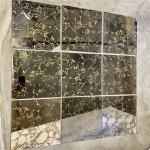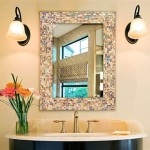How to Mirror Display in Windows 10 using HDMI
Mirroring your Windows 10 display to an external monitor or TV via HDMI offers an expanded workspace, facilitates presentations, or enhances entertainment experiences. This article outlines the various methods to achieve seamless screen mirroring using an HDMI connection.
Method 1: Using the Project Shortcut (Windows Key + P)
Windows 10 provides a quick and convenient shortcut to manage display output configurations.
- Connect the HDMI cable to your Windows 10 device and the external display.
- Press the Windows key + P simultaneously. This will open the Project menu on the right side of the screen.
- Several options will be presented:
- PC screen only: Displays content only on the laptop or primary monitor.
- Duplicate: Mirrors the content shown on the primary display to the external display.
- Extend: Expands the desktop across both displays, creating a larger workspace.
- Second screen only: Shows content only on the connected external display.
- Select Duplicate to mirror the display.
Method 2: Through Display Settings
Display settings offer more granular control over resolution, orientation, and multiple display configurations.
- Ensure the HDMI cable is securely connected to both devices.
- Right-click on the desktop and select "Display settings."
- Under the "Multiple displays" section, choose the appropriate display mode. Select "Duplicate these displays" for mirroring.
- Adjust the resolution and orientation for each display as needed.
Method 3: Utilizing the Intel Graphics Control Panel (For Intel Graphics Users)
Systems with Intel integrated graphics can leverage the Intel Graphics Control Panel for display management.
- Confirm the HDMI cable is connected.
- Right-click on the desktop and select "Intel Graphics Settings."
- Navigate to the "Display" section.
- Under "Multiple Displays," choose the "Duplicate" option.
- Adjust resolution and scaling as required.
Method 4: Troubleshooting Common Issues
Sometimes, the connection might not be established immediately. Here are some common troubleshooting steps:
- Check the HDMI cable: Ensure the cable is properly plugged into both devices and is not damaged. Try a different HDMI cable if possible.
- Restart devices: Restart both the computer and the external display. This often resolves minor connection glitches.
- Update graphics drivers: Outdated or corrupted drivers can cause display issues. Update the graphics drivers from the device manager or manufacturer's website.
- Check display input source: Ensure the external display is set to the correct HDMI input source. Consult the display's manual for instructions on how to switch input sources.
- Adjust projection mode: Double-check the selected projection mode using the Windows key + P shortcut. Sometimes, it might inadvertently get switched.
Method 5: Advanced Display Adapters Options
Access advanced display properties to fine-tune configurations.
- Open the Display settings (right-click on desktop, select "Display settings").
- Scroll down and click on "Advanced display settings."
- Click on "Display adapter properties for Display #" (where "#" represents the display number).
- This will open a new window with several tabs, including "Adapter," "Monitor," and "Color Management." You can explore these tabs to further customize display settings based on your specific hardware.
Method 6: Wireless Display Options (Miracast)
For wireless mirroring, leverage Miracast if supported by both your Windows 10 device and the external display.
- Ensure both devices are Miracast-compatible.
- On the external display, enable Miracast mode. Refer to the display's user manual for instructions.
- On your Windows 10 device, press Windows key + K to open the Connect pane.
- Select the wireless display from the list of available devices.
Method 7: Third-Party Applications
Several third-party applications can offer additional functionalities for screen mirroring.
- Research and select reputable third-party mirroring software from trusted sources.
- Install the software on your Windows 10 device.
- Follow the instructions provided by the application to establish a connection with your external display.
By following these methods and troubleshooting tips, users can effectively mirror their Windows 10 display via HDMI for enhanced productivity and entertainment.
How To Display Your Computer Screen On Tv Via Hdmi Sony

Desktop Mirroring Or Extend Technology Services

How To Setup Screen Mirroring For A Pc

How To Connect And Mirror A Windows Laptop An External Monitor Screen Via Hdmi 2024

How To Mirror Your Screen On Windows 13 Steps With Pictures

Connecting Laptop To The Tv With Just A Few Simple Steps Resource Centre By Reliance Digital
How To Display The Image From Windows 10 Computer On Tv Using Screen Mirroring Feature Sony

Best Methods How To Duplicate Windows Screen Airdroid

How To Use 3 Multiple Screens On Your Laptop Or Pc

Screen Mirroring A Phone Ipad Or Laptop To Tv How Push Your The Big








